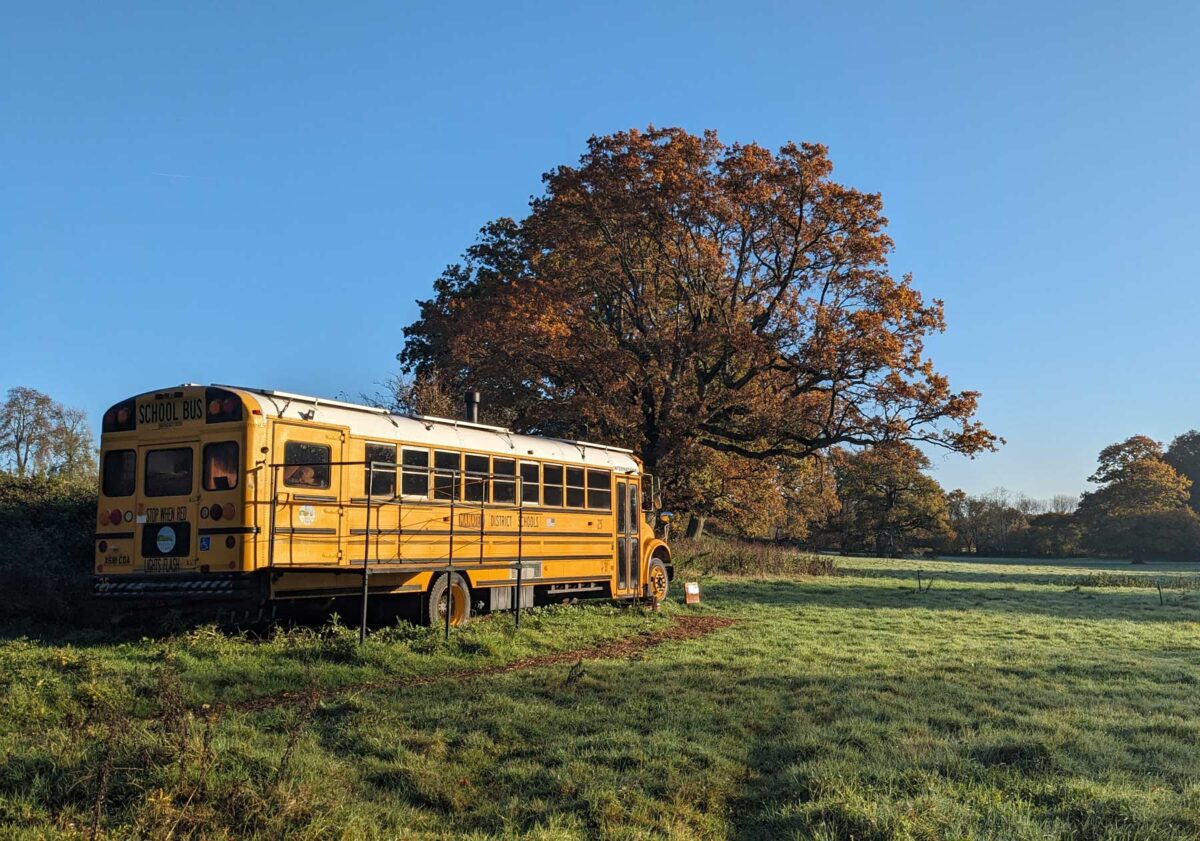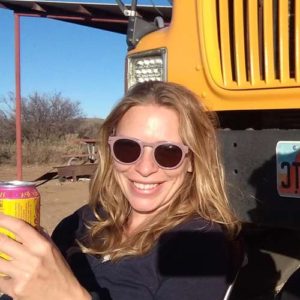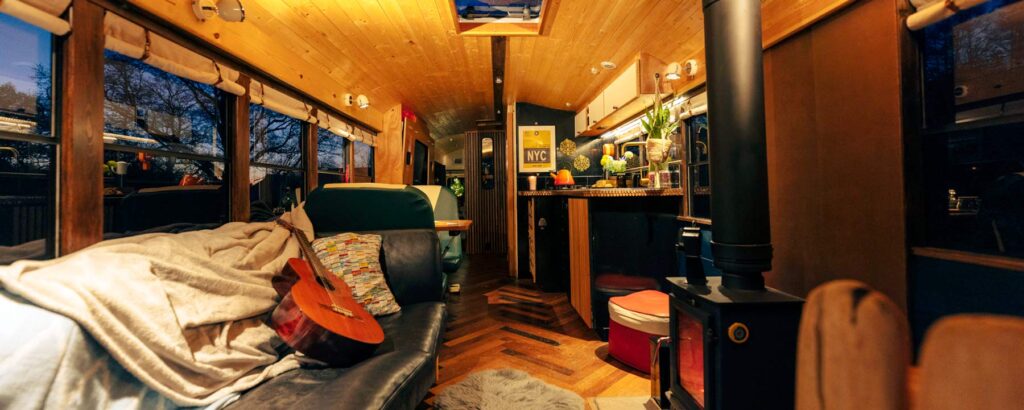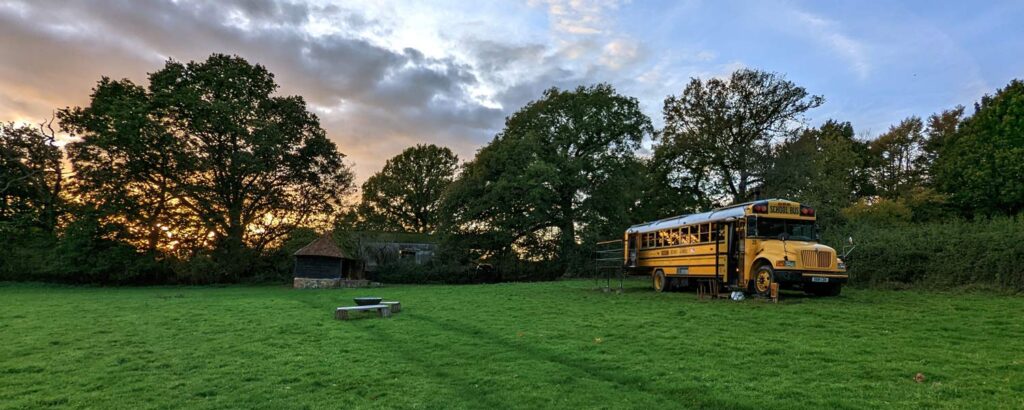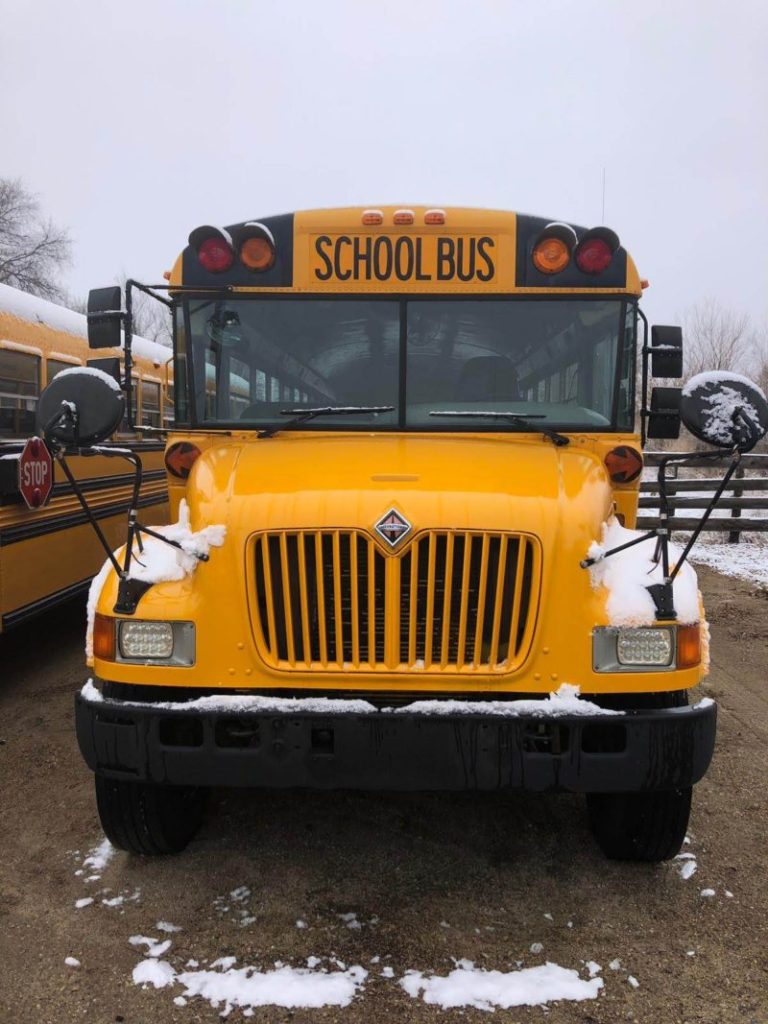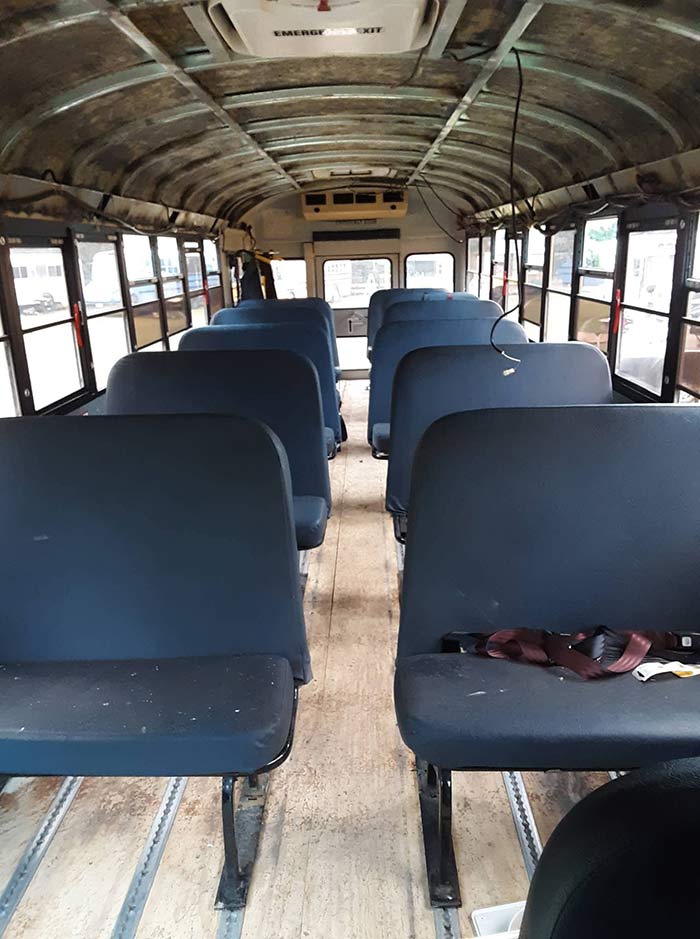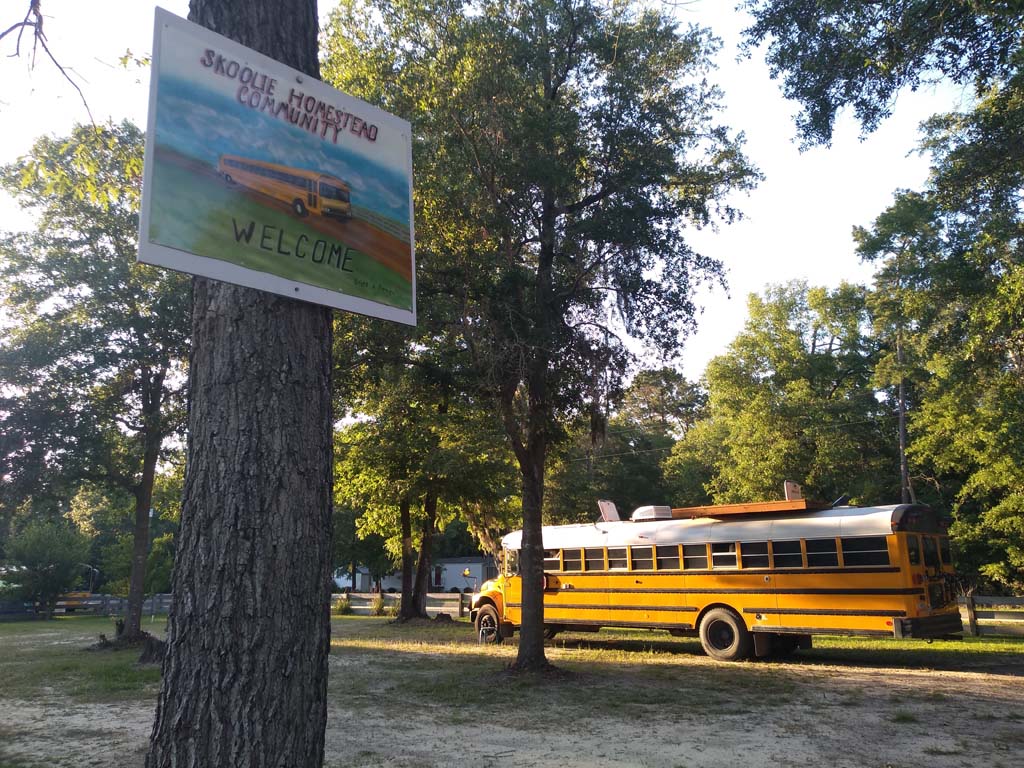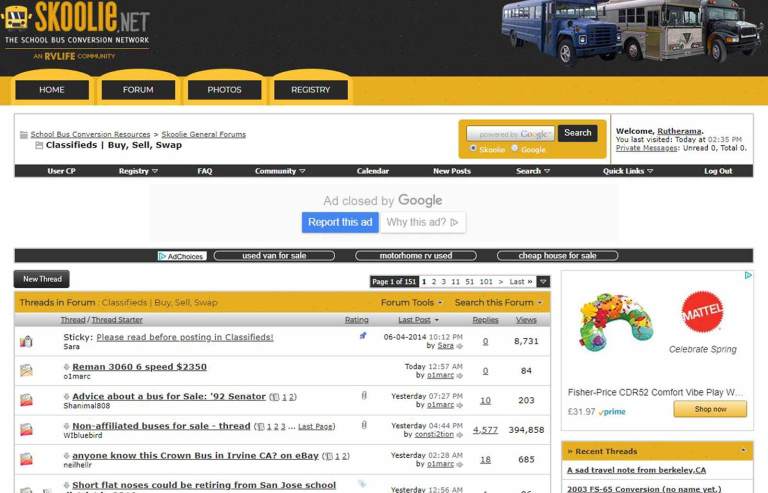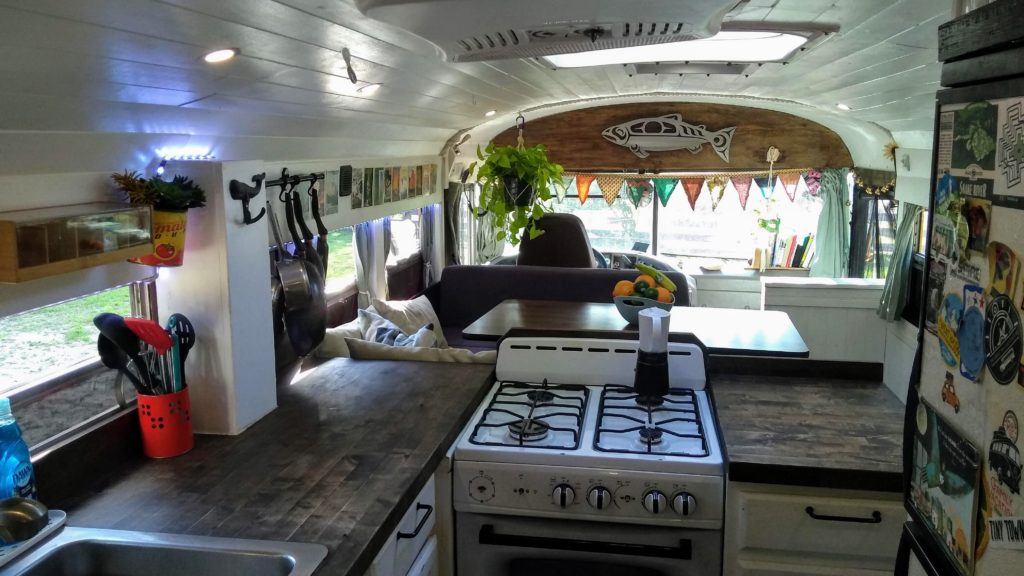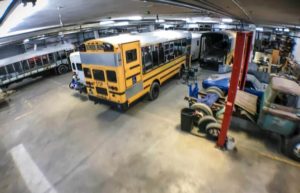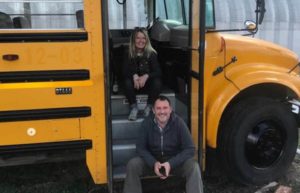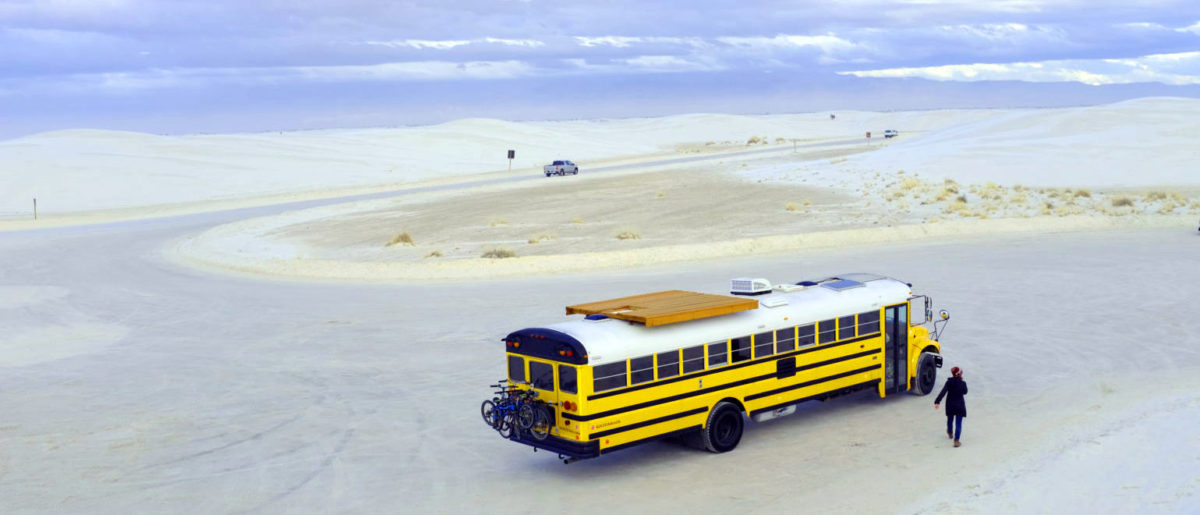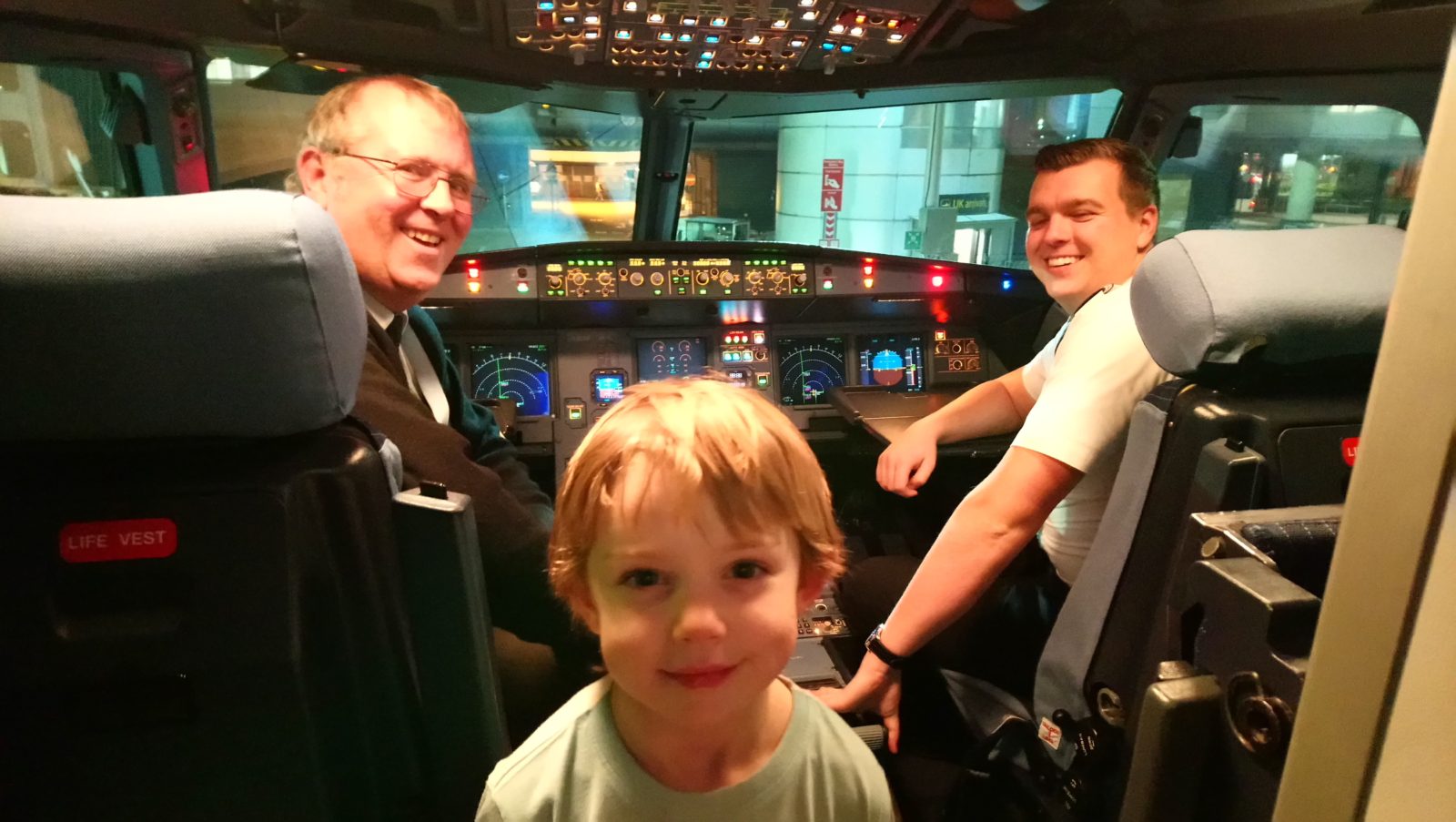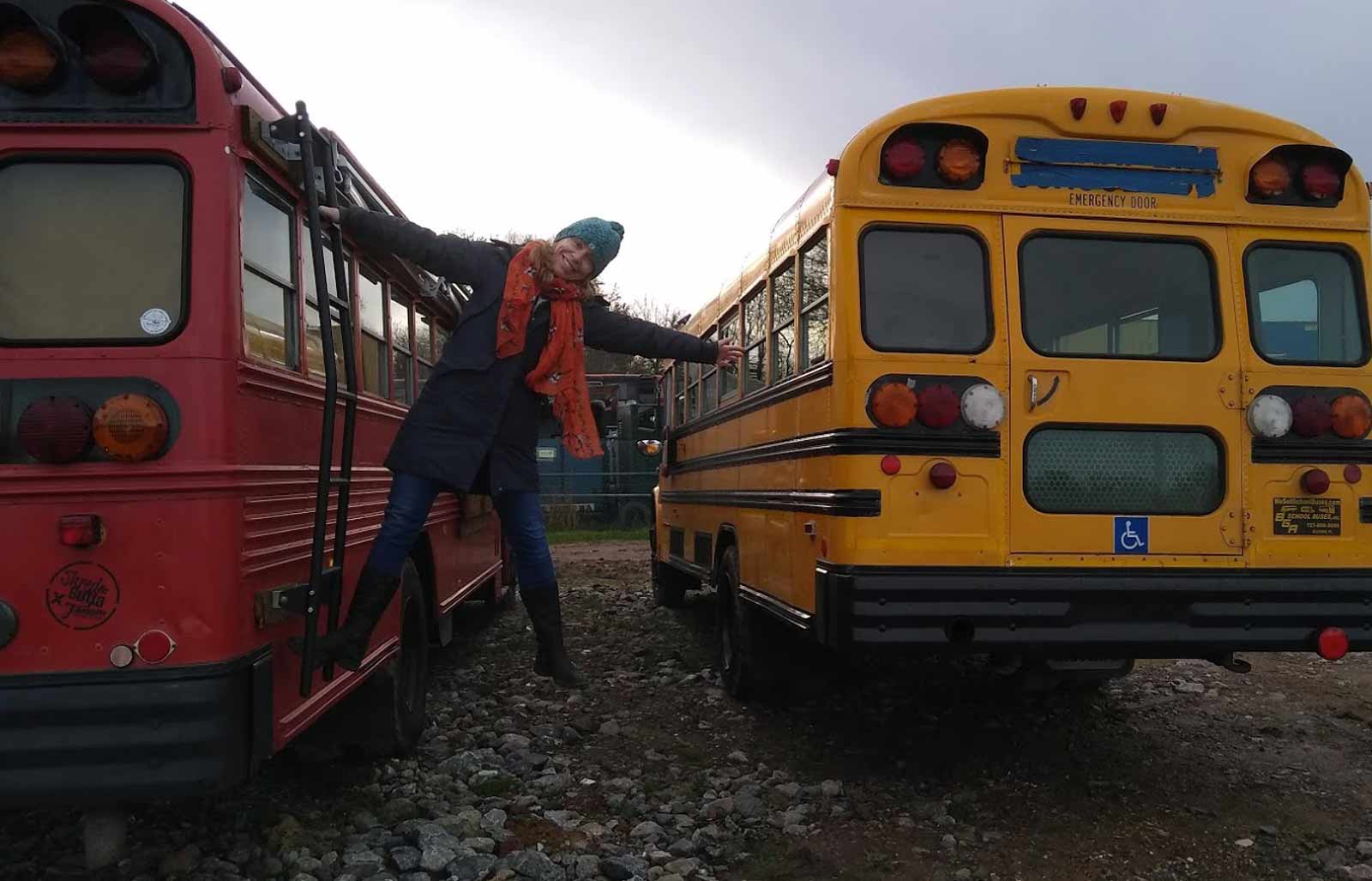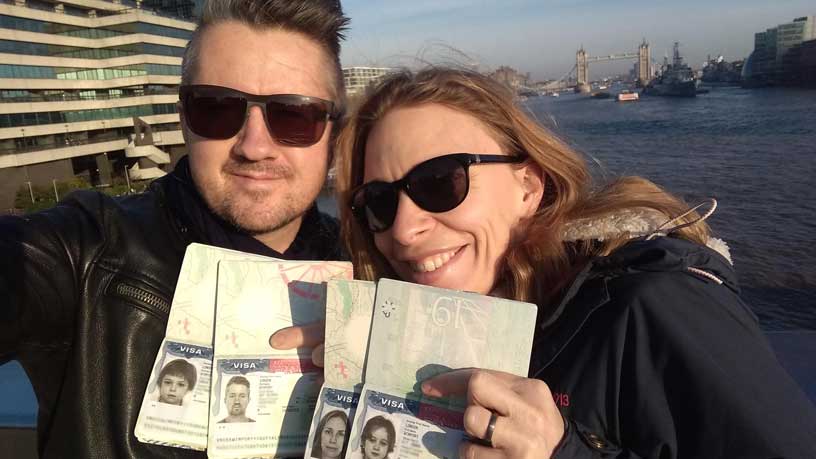A year in a Skoolie
Finally, after months of planning, we flew out to Utah in the United States to begin our year-long adventure travelling in a converted school bus – a Skoolie

By Ruth
The start of the adventure - summer 2019
When we started planning our trip on a map in our UK living room, we had a route that spiralled through the Lonely Planet highlights of America, weaving our way through Alberta, B.C and the Yukon, eventually reaching Alaska. I wanted bears, Orca and wild salmon leaping. I wanted to camp out in the Denali Park wilderness under the Northern lights – it looked incredible. We soon realised though, incredible did not mean realistic. Our trip was entirely dictated by two things: where our builder lived and when the kids broke up from school. That meant flying into Salt Lake City, home to our builder, in mid-July 2019, with temperatures in excess of 100 degrees Fahrenheit.
Alaska has a narrow summer window – we simply wouldn’t make it – and there was no way we could travel south in such intense heat, which struck off many of the National Parks that America is famous for: Grand Canyon, Bryce Canyon, Zion, Moab… it was a sharp blow. But then we realised, it actually took the pressure off and gave us freedom. Travelling in a home on wheels to places you know very little about meant we could meander wherever we wanted, follow the good weather and stay as long as we liked. We ended up having a unique and incredible adventure – a real road-trip into the unknown.
Picking up our American school bus
We picked up our bus two days after we arrived in America. Our builder did not send us many photos of the progress because he was so busy, so although we had seen the layout on paper and had seen some of the wooden structures for the sofa, kitchen and bunks, we had no idea what it looked like. It was so strange to step into the space and see it for real.
Mirrors are your friend
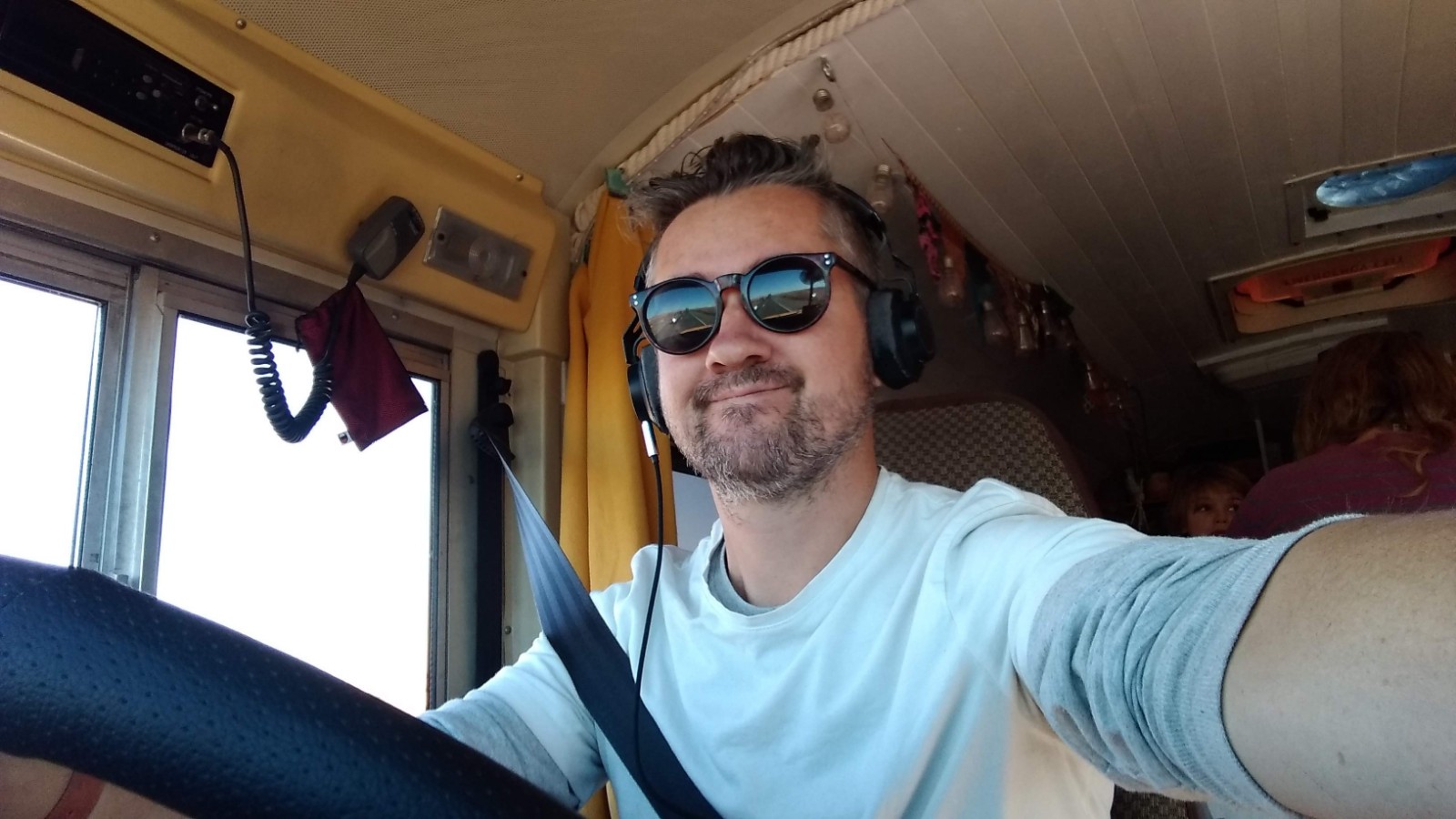

It’s pretty scary hitting the road in a 38ft, 14 tonne vehicle. You have to have a special HGV license to drive something of that size in the UK but in America, once the bus is registered as a personal vehicle, you can drive it with your standard license. Taking his family out on the road was the bit that Guy was anxious about. Our builder had given him a quick lesson the day before in a parking lot – “rely on your mirrors to see where you are” – and he’d watched a few You Tube videos (I kid you not!) about ‘squaring corners’, but that first journey was a test of his nerves. He nailed it though and we were on the road, just the 4 of us, ready to go camp America style.
Utah, Idaho & Wyoming


We spent a glorious two weeks soaking up the sun in the slightly cooler northern Utah, making the most of the National Forest campsites, finding our way with the Skoolie and learning its (and our) travelling quirks. When you live a self-sufficient life you need to get used to relying on solar (not a problem in a Utah summer), composting toilets (also, amazingly, a simple smell-free solution) and reduced water (more problematic as we didn’t know where to refill!).
Our route towards Yellowstone dipped into Idaho, where we kick-started our Harvest Host’s membership (a scheme that gives Skoolies and other RV’s the chance to camp for free and try the produce at small farms, distilleries, breweries, vineyards etc.
After some debate at the distillery bar about how steep the passes into Yellowstone were, we opted for a longer drive through Wyoming that took in more of the incredible scenery. It allowed us to approach Grand Teton and Yellowstone from Jackson Hole in the south.
We spent a week in the Grand Teton National Park and Yellowstone National Park. You can read more about this trip, as well as how we managed it on our budget, here.
Montana


Montana is so heavily wooded that fires are the norm during summer. They ravage the landscape, affect visibility and leave a smoky smell everywhere. Happily for us, Montana was having an unusual weather year – a wet spring kept temperatures cooler and Montana’s summer was hot, clear, lush and fresh. Many people told us we were experiencing it at its best and they were right, it was a total joy to travel and camp.
Living in a Skoolie gave us the freedom to enjoy Montana – we spent a month fishing, hiking and kayaking, we bought bikes and explored further afield, we spent a week hiking in Glacier National Park, one of our favourites, and got dangerously close to grizzly bears. It was the perfect way to settle into Skoolie life. This was no longer a holiday, it was a way of life.
Alberta & Vancouver


The Canadian Rockies had long been on my list of places to visit. Right at the top was the Icefields Parkway, part of Banff and Jasper National Parks, which runs from Lake Louise to Jasper. It is is one of the ‘must-do’ things in Canada in a Skoolie (according to every list ever written!), full of epic scenery, amazing hikes and wildlife galore.
We arrived in autumn (or fall!) and the weather was getting chilly. Just like Montana though, we lucked out – we had gorgeous sunshine for much of the time and could fully enjoy the reds, golds, yellows and greens of the autumnal forests set against the turquoise glacial lakes. It was stunning.
Our route took us from Lake Louise to Vancouver (yay, city fun with old friends!), then on to Vancouver Island and Pacific Rim Nature Reserve. This must have been one of my favourite sites – right in the heart of the old forest, surrounded by Douglas Firs and Red Cedars. The forest floor was densely packed with fallen logs, ferns and fungi, tiny creatures and earthy smells. I loved it. To make it even better, a short path led to a huge beach – miles of crashing waves and yellow sand covered with twisted driftwood and long ropes of seaweed.
You can read more about the hikes we took and the places we explored in our travel blog. You can also read about how we fared with visitors – in Canada, four became six for three weeks.
Washington & Oregon


After a month in Canada, cold weather nipping at our heels, we felt ready for a new chapter of our travels. Our plan, guided by a need for sunshine, was to scoot down south as quickly as we could, leaving the forests and mountains behind. Night drives down Highway 5 beckoned – one long freeway that would take us from Vancouver through to Southern California. But then, as is always the case, we looked at the map and doubt entered our mind. What about Washington and Oregon? Rain-forests and Redwoods, wild seas and sprawling beaches, how could we miss all that? Should we continue to gamble with the weather and take it a little slower?
Of course we did! And it was well worth the wild weather we experienced. After a hairy drive / slide over black ice on a mountain pass and freezing, snowy nights at Olympic National Park, we took on the coastline. We joined the infamous Highway 101 south of Aberdeen and followed it south, crossing into Oregon at Astoria. The coastline was rugged and impressive – huge spurting blowholes, cliffs and miles of golden sand dunes backed by thick forest.
Read more about our Washington and Oregon trip (and how we incorporated home-skooling into our adventure) here.
California


We envisaged our route through the Golden State as a string of sunny beaches and glitzy cities full of beautiful people (as well as a fair amount of suburban sprawl and 14-lane highways!). It ended up as a trip through towering Redwoods, autumnal vineyards, sun-scorched gold-panning towns, breath-taking National Parks and barren plains filled with spiky cactus and dust clouds. We didn’t go near the cities and we barely saw the beaches – the California fires had taken hold and we had to go inland.
We found a side to California I was barely aware of. Small gold-panning towns and stunning vineyards, incredible Halloween extravaganzas, cheesy neon diners , huge slot canyons and more critters than you could dream of. We somehow managed to sneak into Yosemite before the fires closed it off and had three idyllic days searching for Alex Honnold on El Capitan through our binoculars, and even made it to Joshua Tree National Park for cactus and bouldering fun.
Read about how, six months in, we felt we had adapted to life in a Skoolie in California.
Arizona and New Mexico


Suddenly, instead of heading south along the western length of America, we were headed east. Looming in the distance was the Rockies – a literal hump that represented a much bigger marker, the half-way hump of our trip.
Nowhere does empty roads quite like the American desert. It was a long drive of nothingness; mile upon mile of scrubby land and windswept bits of tumbleweed. We were relieved to see our first Saguaro cactus and the colourful lights of Tucson. After weeks of barren desert, everything sandy yellow or spiky green, the landscape suddenly shifted into a state of colour and life. As we reached the Mexico and New Mexico border there were even a few bodies of water – Patagonia Lakes and Whitewater Draw – a Mecca to migrating birdlife. Crested birds of different colours swooped above us; herons fished alongside our bus and owls called out at night. We got up at dawn to watch thousands of cranes take to the skies, squawking and croaking like a group of cranky pterodactyls.
The boys discovered a love of caves in Arizona’s Kartchner Caverns so we took them to Carlsbad Caverns National Park. They said it was the best thing they had done in America – this was closely matched by White Sands National Park– where you can sled down the pure white gypsum dunes.
Read more about our quest to find friendship and fun in the desert here
Texas


We knew it would take us an age to cross Texas in a Skoolie but over the course of the journey we’d leave the desert behind and find the Gulf Coast and the Deep South as well as music, art, fresh produce and delicious Tex-Mex food.
The first Texan treat for us was Big Bend National Park – every moment brought us something new to look at – from the funny bobbing heads of the road runners on the campsite to the tinkling bells around the donkey’s neck on the nearby Mexican shore. Turtles swam in the rivers and at dusk the Sierra del Carmen literally glowed.
Texas continued to reveal its treasures: we biked on the deserted shores of Padre Island; fished from the rooftop at sunset on Goose Island pier, watched the heavy flying-boat-shaped pelicans skim the waves as they touched down at Magnolia Beach and spotted alligators lurking in the shallows amongst the ibis and egrets at Brazos Bend.
Louisiana, Mississippi and Alabama


The Deep South. The words conjure up an array of images, each promising a very different picture of America to that which we have experienced so far. We were entering Louisiana, Mississippi and Alabama, each state a centre for the chequered history surrounding slavery, war and poverty, but also a heartland for the music, food and Southern way of life that charms travellers from around the globe. It offered a completely different element to our road-trip.
We visited a plantation, making sure to go to one that recognised slavery rather than the many that focus more on mint juleps and hoop skirts. We also managed to find somewhere to stay in New Orleans the weekend before Mardi Gras. We watched the parades, caught the beads and soaked up the street life of one of the coolest cities in America.
Read more about trip in the deep south here.
Florida


What do you think of when I write the words Florida? Sandy beaches, glorious sunshine, Disney? It’s the perfect holiday destination…. well until you realise that every other RV traveller and European winter escapee has that same image of themselves sipping cocktails at the sunset beach bar, watching rockets launch from Cape Canaveral, taking day trips into the mangroves to spot alligators and swimming with manatees in the fresh water springs.
Florida was full. Every campsite we tried was rammed, every activity was booked up and we spent every evening poring over road maps and trip planner books to try and find the best solution. How on earth would we ‘do Florida’? The answer was to do it in the way we had done every other state – on our own agenda.
We had three incredible weeks enjoying the beaches on the panhandle, touring Harry Potter World at Universal Studios and kayaking in the mangroves and springs with manatees and alligators. Our wiggly route also saw us volunteering at a goat farm and joining a crowd of locals across the water from NASA to watch a night-time rocket launch. Florida ended up being one of our favourite destinations.
Enthuse with us over Florida at our travel blog.
Georgia


We arrived in Georgia at the same time the news arrived that the UK had gone into COVID-19 lockdown. America was not far behind, so we took refuge with a group of Skoolies at the Skoolie Homestead Community. We expected to stay a week or two but the healthcare crisis in America, coupled with our travel insurance company refusing to cover anything pandemic-related, we ended up there for two months.
The Homestead was the perfect place for us to experience a lockdown. Although it was hot, humid and full of gnats and mozzies, it had a brilliant communal area and lovely people, all of who had chosen too live a bus-life. This was the first time we’d really met other Skoolie families and there were several of them within the same field. There were other kids to play with and space to run around, people played music and chatted, offering Skoolie advice and stories. We had found the community we had been looking for for months and it was here that we started to hatch our plan – could we take our bus back to the UK?
Read more about how Covid-19 affected our Skoolie road-trip and the amazing Skoolie community here.
Tennessee North and South Carolina


We were hesitant about leaving the Skoolie Homestead when Covid-19 was still a threat, but we only had one month left of our year-long adventure. The delay in Georgia had already meant that we would fail to do the east coast in its entirety, but we still had time for a trip to the Smokies. It had to be done. Besides, what better way to isolate than keeping to yourself in a bus in wide open spaces.
The campsites started to open up so we took that as our sign and headed through South Carolina into the mountains, stopping at several Harvest Hosts breweries and distilleries along the way, which helped us learn more about how the virus was affecting small producers. The Black Lives Matters debate was also raging across the cities in America and, though we saw very little of it in the rural parks, it was fascinating to see how suburban and rural Americans responded to the crisis.
We finished our trip off with a visit to Charleston and Savannah. We were meant to be in New York for 4th July celebrations. Instead we parked opposite downtown Savannah, across the river, listened to jazz music floating across the water and toasted our incredible trip.
Read more about how we found the Black Lives Matter debate in rural areas of the deep south.




